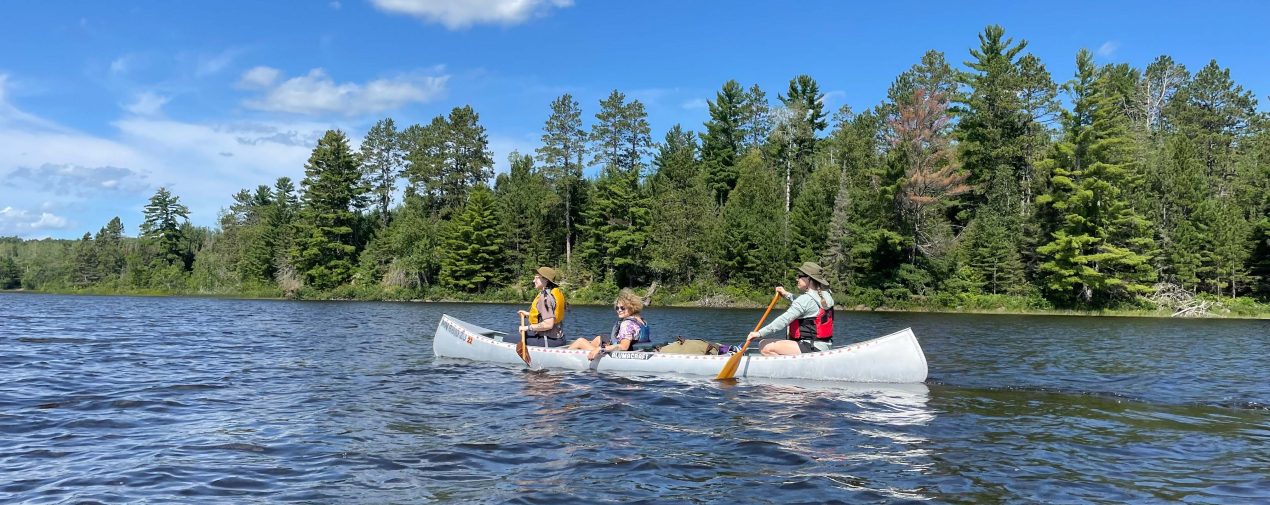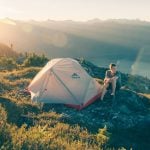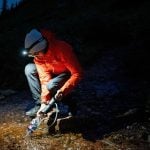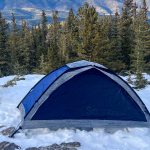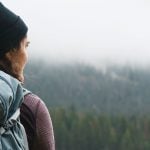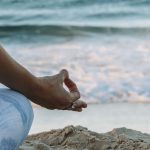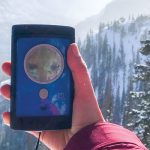So, You Want to Start Canoeing?
Paddling a canoe is a magical way to get out on the water. People of any fitness level can enjoy this easily adaptable activity on an inner city river, the ocean, or a neighborhood lake.
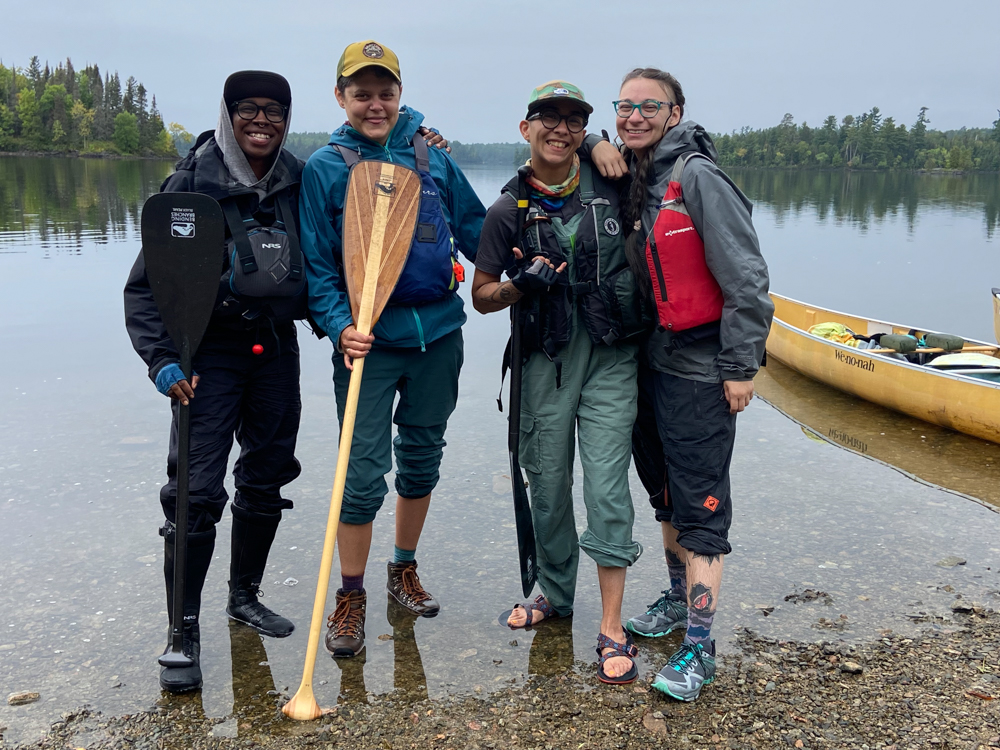
I’ve put together a beginner’s guide to canoeing to help you feel prepared to step into a boat and start paddling. It includes some vocabulary words, must-have gear, tips to paddle efficiently and stay safe. You’ll be ready to hop in the bow and throw a J-stroke when you’re done reading!
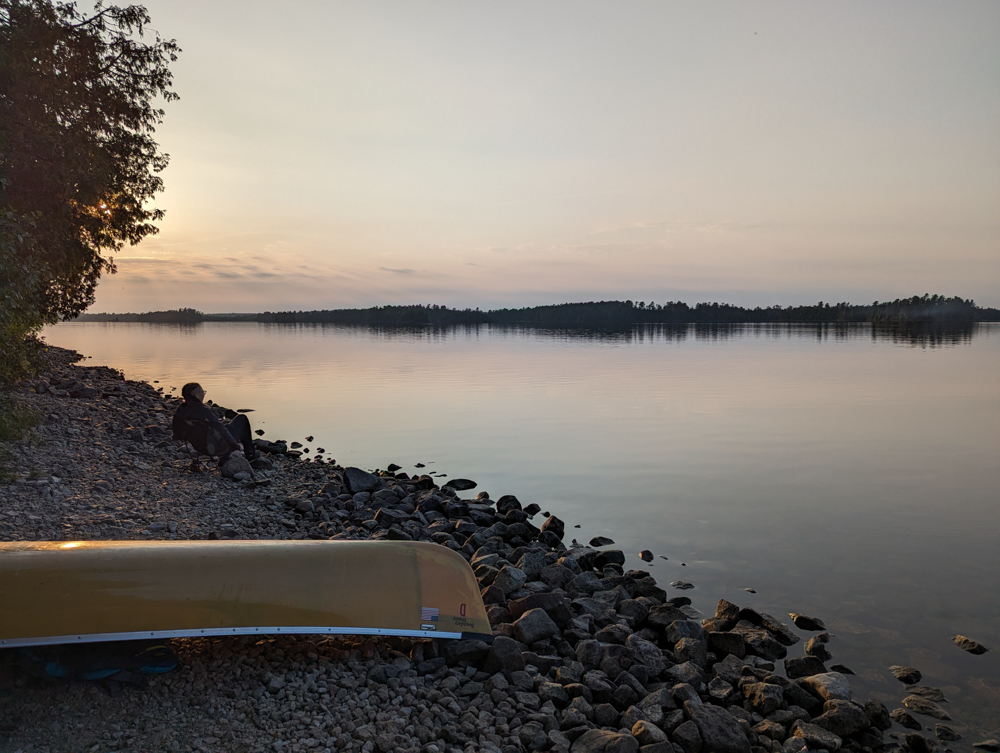
Canoeing 101
Words You Need To Know
Knowing a few canoeing-related words can help you talk to other paddling enthusiasts and gain confidence in your canoeing abilities.
- Canoeist – A person who canoes
- Portage – The walk between bodies of water. Canoeists carry their boats and gear across these paths. Some are well-maintained (like in the Boundary Waters Canoe Area in Minnesota), while others are more wild (like the Quetico in Canada).
- Rod – A unit of measurement about 16.5 feet long, or the size of an average canoe. Portages are measured in rods.
- Bow – The front of a boat. Pronounced “bahw”
- Stern – The back of a boat
- Paddle Blade – The wide part of the paddle that dips into the water
- Feathering – Turning the paddle so the blade is parallel to the water as you bring the paddle forward in the air before dipping it back into the water. This technique reduces wind resistance and increases efficiency
- J Strokes – Dip your paddle blade into the water and make a J-shape on the side you want to turn the bow toward
- C Strokes – Dip your paddle blade into the water and make a C-shaped motion away from the boat to turn the bow toward the side of the boat you’re not paddling on.
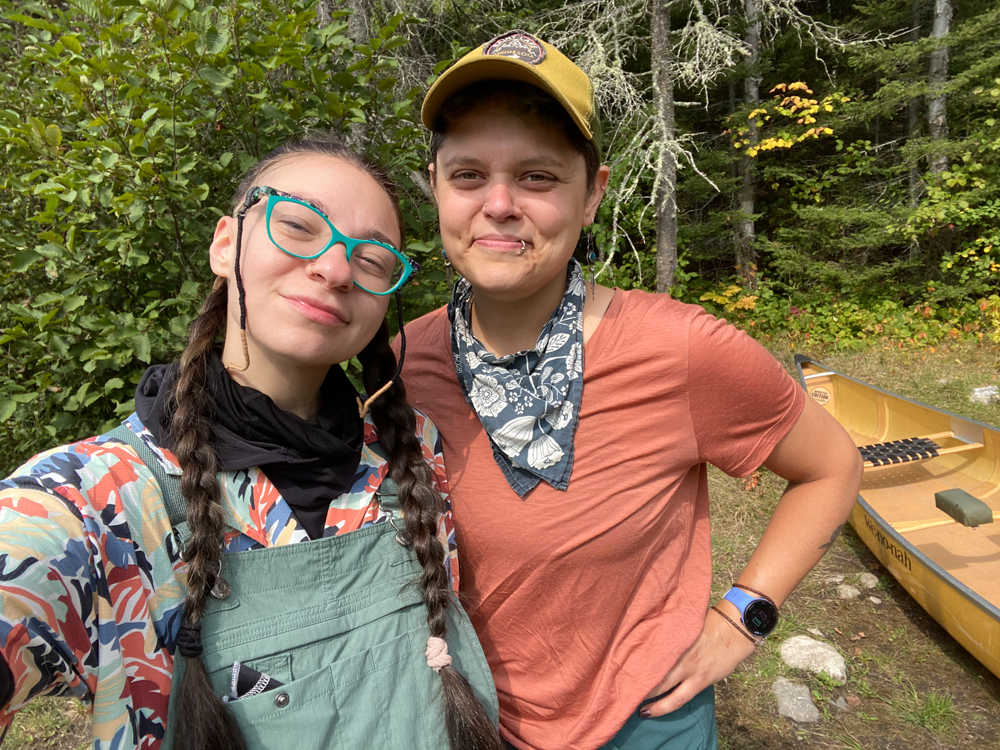
Gear Up For Success
You don’t need to buy a full paddling kit to get out on the water. You probably already own clothing, shoes, and outerwear that will help you stay comfy and dry in a canoe, but there are a few paddling-specific items to borrow, rent, or buy.
- Canoe – Most canoes are 16- to 17-feet long. They may have two seats (one in the front and another in the back) or one (in the center). Indigenous people built canoes out of birch bark and wood. Today, many people opt for Kevlar canoes that weigh around 45 pounds. Old-school die-hards may opt for wood-canvas boats weighing more than twice as much as a Kevlar boat.
- Paddles – Canoe paddles are made of wood, plastic, metal, or carbon/fiberglass. They are usually 52 to 60 inches long. For flat water like lakes, look for a straight-shaft paddle with a wide blade. Lightweight wood is a common choice for beginners because it’s beautiful and hardy. Fiberglass paddles are super lightweight (and considerably more expensive), but they’re much more delicate. Consider this upgrade once you’ve fallen in love with paddling. Look for a paddle that allows your blade to touch the water while almost fully extending your arms when seated. Having the right length paddle ensures efficient movement and prevents you from getting tired quickly.
- PFD – Not to be confused with a PDF, PFD stands for personal floatation device. Also known as “life jackets,” paddlers need PFDs with large arm holes and skinnier chests to minimize friction around the armpit areas when paddling. Look into the laws where you’re paddling, as some places require paddlers to wear life jackets while others just need them in the boat.
- Clothing – Wear wicking clothing like wool that will dry quickly when wet.
- Footwear – You can wear anything from sandals to hiking boots when paddling. Some people prefer paddling-specific shoes like neoprene booties, while others canoe barefoot. It’s all about personal preference! Consider closed-toe shoes to protect your feet from sticks and rocks if you’ll be portaging.
- Waterproof camera: Consider bringing a disposable waterproof camera, waterproof phone case, or waterproof camera case so you can take photos on the water.
- Waterproof Bag aka Dry Bag: Day trippers often bring a 5-liter waterproof bag to carry their car keys, wallets, phones, snacks, etc. Stash anything you don’t want to get wet in these handy bags!
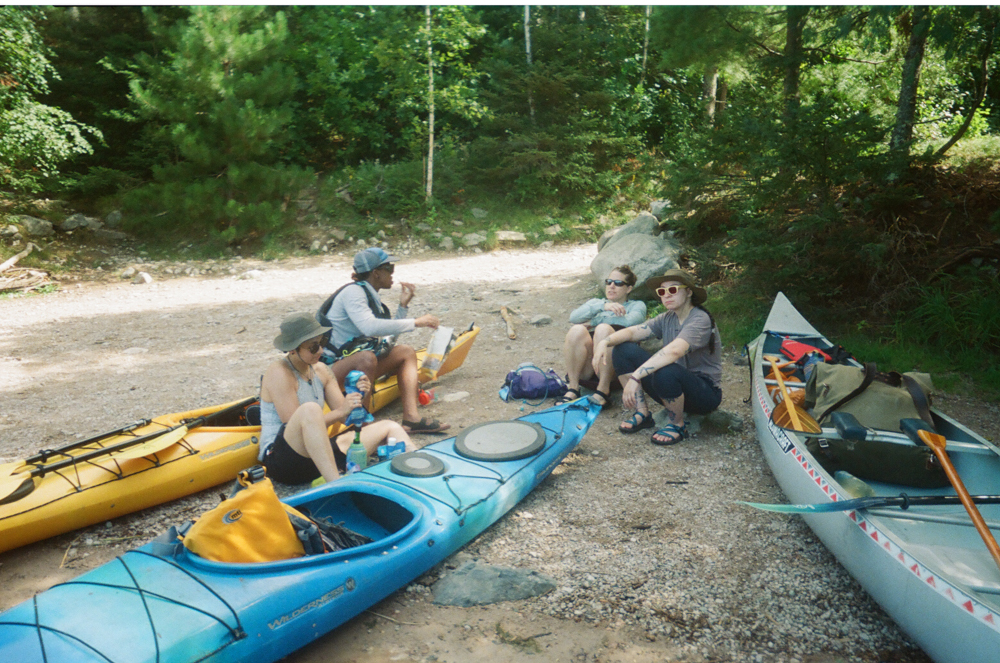
Resources For Beginners
Nervous about trying canoeing your first time? Take a deep breath – you can do it! Most canoe rental companies won’t let renters leave the dock without a safety talk. Guides or outfitting staff will talk you through paddle strokes for steering, and going forward and backward. They may even put you in a canoe on the water and give it a little shake to test your balance before sending you off.
Consider taking a canoe class for further instruction. Many outfitters, rental companies, and outdoor stores offer courses to help new paddlers gain confidence in their paddling skills. The American Canoe Association also provides courses on specific skills (like whitewater paddling and water safety) for all skill levels!
Some areas also have canoeing or paddling clubs or groups on sites like Meetup, where you can gain valuable skills and information in a more casual setting. (Like MadCity Paddlers in Madison, WI, and Paddle Trails Canoe Club in WA.) Most paddlers are friendly and enjoy passing on their knowledge, so don’t hesitate to ask questions!
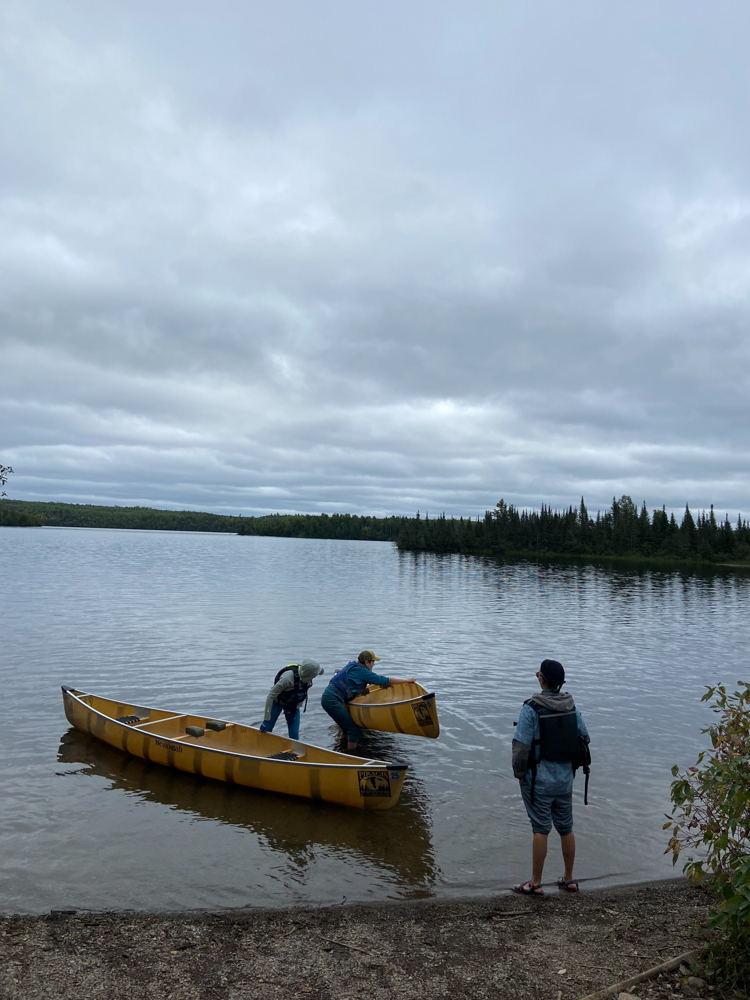
Safety Tips
The best way to prevent something from going wrong while canoeing is to practice what to do if it does. For canoers, that means knowing how to swamp or flip a canoe and get back in safely. Practice with someone who can teach you in-person, such as an instructor or a seasoned guide. Wear a Coast Guard-approved personal floatation device to help you stay afloat while in the water.
The Final Word
Canoeing can be a rhythmic, relaxing adventure whether you paddle on a creek near home or on a far away ocean. Follow my tips above to get started on your first canoeing adventure!
All images are courtesy of Hatie Parmeter.
About the Gear Tester

Hatie Parmeter
Hatie Parmeter (she/her) digs hiking, paddling, and yoga. She's a writer and editor in the outdoor industry and is working toward an MS in Clinical Mental Health Counseling. Soon, you'll find her teaching wilderness mental health resources for outdoor outfitters, guides, camps, and more. Bio image is by Lauren Danilek.

